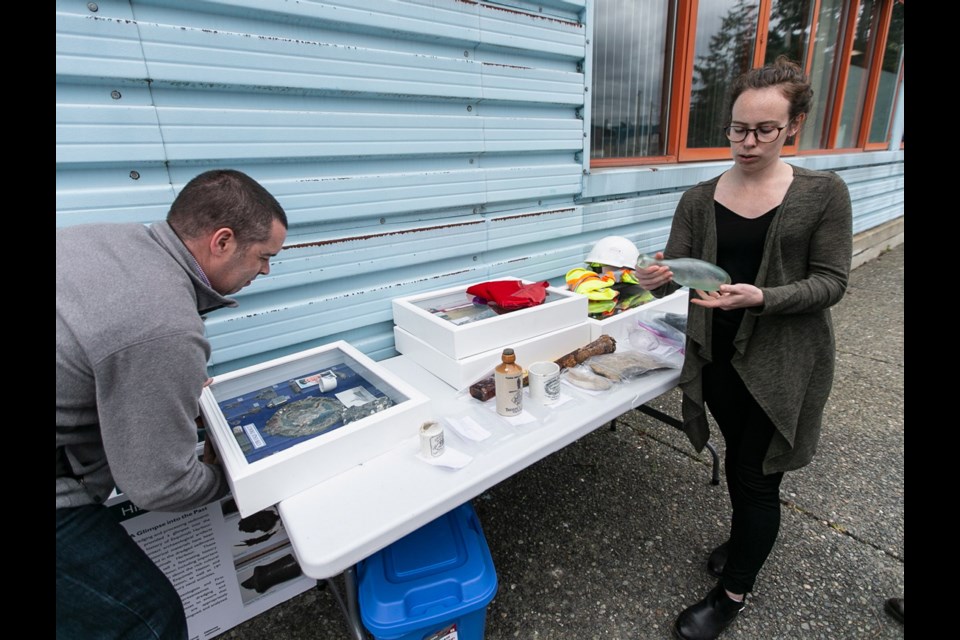About 3,000 artifacts have been sifted from tens of thousands of cubic metres of sea-bottom material dredged up from Esquimalt Harbour.
The treasures include items such as naval shipboard crests and memorabilia, Royal Marine Light Infantry buttons dating to 1885-1887, torpedo-shaped bottles designed to lie on their sides to keep the cork moist, and a ceramic ginger-beer bottle produced by Victoria’s own Thorpe and Co., a soda water and soft drink manufacturer that operated at David Street and Gorge Road from 1899 to 1922, according to the city’s archives.
Caitlin Craig, an anthropology student at the University of Victoria hired to catalogue and care for the artifacts, said the items provide wonderful little slices of life in Victoria in the 19th and early-20th centuries.
From containers that once held tomato-flavoured tooth cleansers to clay pipes with carved human faces and a Second World War gas mask, all the pieces tell a story about past life in Esquimalt.
“I personally really like the gas mask,” Craig said. “Living here, it’s just not something I can ever imagine ever using or needing to own.”
Esquimalt Harbour’s non-Indigenous use dates to the mid-19th century, when the Royal Navy decided to make it a base and completed a graving dock. In the early years of the 20th century, it was turned over to Canada. The Royal Canadian Navy’s Pacific fleet continues to call Canadian Forces Base Esquimalt its home.
In 2016, the federal government began the job of removing 110,000 cubic metres of contaminated bottom material from Esquimalt Harbour to be barged for disposal to a facility in the U.S. The job is expected to take until 2020 and cost $162 million.
Mike Bodman, project manager for the Esquimalt Harbour Remediation Project, said the government decided to act after studies found heavy metals and other contaminants deposited during decades of industrial use were making their way into the marine food chain.
Bodman said the sea floor of Esquimalt Harbour does not become progressively layered with sediment quickly enough to form a protective cap. Meanwhile, the ships plying its shallow waters routinely stir up the bottom sediment.
“The contamination on the sea bed was getting into the sea life, and people eat the sea life,” said Bodman. “That’s not great and it’s a problem that’s not going to go away on its own.”
As the dredging started to retrieve historic material, project managers decided to seek the help of an archeologist, like Craig, to start examining, cataloguing and preserving the material.
Grant Keddie, curator of archeology at the Royal B.C. Museum, gave credit to the project managers for their foresight.
“It’s very likely they will find some really old archeological material,” said Keddie. “You could potentially find a 2,000-year-old canoe on the bottom.”
“We know boats have been found in Britain and they are 8,000 years old,” he said. “They can sit down on the bottom for long periods of time and stay well preserved.
“You just never know what you are going to find.”



